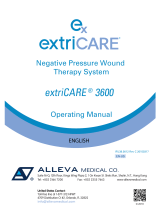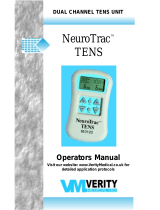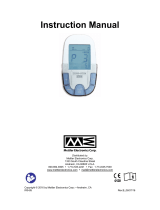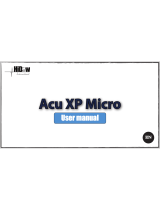
Solutions for Dressing
and Device Securement
Latex free, hypoallergenic
family of tapes
3M
™
Surgical Tapes
Mini Adhesion
Charts

3M Health Care has supplied health care providers with the finest in skin
health care for over 40 years. Our full line of hypoallergenic and latex-free
surgical tapes continue to set the standard. And, our support programs are
designed to help ensure clinicians deliver the best in skin health for their patients.
Our products are:
Safe as demonstrated by:
• Human Cumulative Irritation Patch Testing
• Human Repeat Insult Patch Testing
Effective as demonstrated by:
• Extensively tested on human volunteers
• Product evaluations in clinical settings
3M
™
Pressure Sensitive Adhesives
All 3M
™
Surgical Tapes have
adhesives that are:
• Hypoallergenic
• Free of natural rubber latex
• Pressure sensitive (adhere with
only nger or hand pressure)
• Designed to be as gentle as possible
and yet deliver the desired performance
In general, tape adhesion builds over time, with the
fastest rate of increase during the rst 24 hours.
Use this booklet and educational materials to guide
your selection of tape to give the desired result: the safe,
effective secural of devices and dressings.
Mini Adhesion

Considerations in Choosing A Tape For Tube Or Dressing Secural
I. Degree of importance of tube or dressing
• The more critical the tubing/dressing, the higher the
adhesion required.
• Strength of adhesion and backing may be more important
than gentleness.
• Gentle tapes with higher adhesion may be used without increasing the risk of
skin trauma if properly applied and removed.
• Some tapes are less gentle (e.g. 3M
™
Durapore Tape and 3M
™
Cloth Adhesive
Tape) but are used for:
- high initial adhesion - high long-term adhesion - high strength of backing
II. Surface characteristics
Skin
• Dry
• Damp
• Diaphoretic
• Wet: secretions, leaking tubes
• Weeping
• Macerated
• Oily
• Hairy
• Edematous
• Intact vs. impaired skin integrity
• Elastic vs. non-elastic
• Fragile skin (elderly, very young)
• “At-risk” (e.g., patient on systemic
corticosteroids, chemotherapy; malnourished)
• Flexing
Dressing
• Material
• Weight
• Conformability
Device
• Contour
• Weight
• Material: metal, plastic, other
Tubing
• Diameter: small, large
• Texture: smooth, ribbed, other
• Material: PVC, silicone, other
• Weight
• Length
• Potential for drag or pull
• Other support (e.g., sutures, tunneling)
• Heavy tubings require higher adhesion.
• Bulky dressings require high conformability and may
require greater adhesion.
• Individual results may vary.
III. Activity level of patient
• The more active the patient, the higher the adhesion required.

3M, Blenderm, Durapore, Medipore,
Microfoam, Micropore and
Transpore are trademarks of 3M.
Please recycle. Printed in U.S.A.
© 3M 2004, 2009. All rights
reserved.
70-2009-4158-4 (39.2)ii
Skin & Wound Care Division
3M Health Care
3M Center
Building 275-4W-02
St. Paul, MN 55144-1000
USA
1-800-228-3957
www.3M.com/healthcare
3M Canada
Post Ofce Box 5757
London, Ontario N6A4T1
Canada
1-800-364-3577
IV. Potential for skin surface distention or movement
• The risk of skin damage may be reduced by using tapes that stretch with
skin distention or movement.
V. Anticipated wear time
• Tape adhesion generally builds over time. Occlusive plastic tapes promote
moisture build up. They are best used short term since adhesion decreases
over time. Breathable tapes should be used for longer term wear.
VI. History and current medical conditions (e.g., allergies/ sensitivities to
medical adhesives, medications, medical conditions)
Overview of the 3M
™
Surgical Tapes

Increasing Long
Term Adhesion
Increasing Risk of Trauma
Lower Adhesion/
Lower Risk of Trauma
Lower Adhesion/
Higher Risk of Trauma
Higher Adhesion/
Lower Risk of Trauma
Medipore H
Microfoam
Durapore
Micropore
Medipore
Transpore
Cloth
Adhesive
Transpore White
Blenderm
Higher Adhesion/
Higher Risk of Trauma
Relationship between adhesion and risk of skin trauma

Medipore H
Durapore
Transpore
White
Cloth
Adhesive
Micropore
Medipore
Transpore
Microfoam
Blenderm
V. High
Increasing Long
Term Adhesion
Higher
Moderate
Lower
Relationship between adhesion and risk of skin trauma
Average long term adhesion to dry skin (48 hrs.)

Higher Moderate Lower
Increasing Initial Adhesion
to Damp Skin
Cloth
Adhesive
Micropore
Transpore
White
Medipore H
Transpore
Medipore
Durapore
Blenderm
Microfoam
Average long term adhesion to dry skin (48 hrs.)
Average initial adhesion to damp skin

Cloth
Adhesive
Durapore
Medipore H
Transpore
White
Transpore
Medipore
Blenderm
Micropore
Microfoam
V. High
Increasing Initial Adhesion
to Dry Skin
Higher Moderate Lower
Average initial adhesion to damp skin
Average initial adhesion to dry skin
-
 1
1
-
 2
2
-
 3
3
-
 4
4
-
 5
5
-
 6
6
-
 7
7
-
 8
8
3M Micropore™ Surgical Tape User guide
- Type
- User guide
Ask a question and I''ll find the answer in the document
Finding information in a document is now easier with AI
Related papers
-
3M Medipore™ H Soft Cloth Surgical Tape Template
-
3M Tegaderm™ Pad Film Dressing Operating instructions
-
3M Transpore™ White Surgical Tape Operating instructions
-
3M Tegaderm™ Absorbent Clear Acrylic Dressing User guide
-
3M Medipore™ Pad Soft Cloth Adhesive Wound Dressings Template
-
3M Tegaderm™ I.V. Advanced Securement Dressing User guide
-
3M Tegaderm™ Antimicrobial Transparent Dressing Template
-
3M Red Dot™ Monitoring Electrode Operating instructions
-
3M Tegaderm™ Absorbent Clear Acrylic Dressing User guide
-
3M Tegaderm™ Absorbent Clear Acrylic Dressing User guide
Other documents
-
Urban Factory FMO01UF Datasheet
-
 Alleva extriCARE 3600 Operating instructions
Alleva extriCARE 3600 Operating instructions
-
Abbott Freestyle User manual
-
Widex CROS FUSION Quick Manual
-
Abbott FreeStyle Libre 2 Get Started
-
Hill-Rom P8010 User manual
-
 Verity Medical NeuroTrac User manual
Verity Medical NeuroTrac User manual
-
 Mettler Electronics Tens-Stim 211 User manual
Mettler Electronics Tens-Stim 211 User manual
-
 HiDow Acu XP Micro User manual
HiDow Acu XP Micro User manual
-
 Tensmate TENS+EMS User manual
Tensmate TENS+EMS User manual












